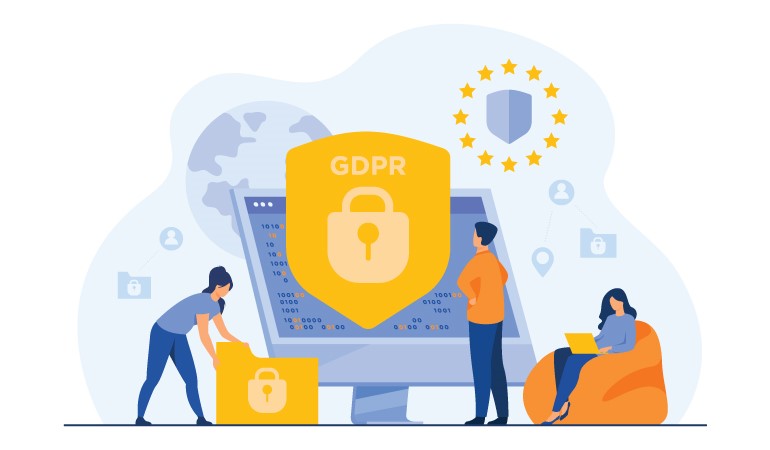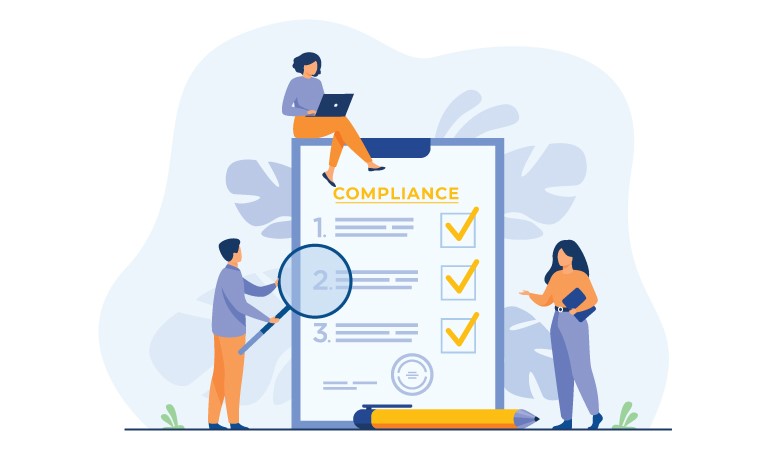
Enterprise web solutions have become increasingly critical in today’s business world as digital transformation overtakes all and sundry. Survival in the digital age hinges upon a company’s willingness and ability to quickly adopt the latest technologies. Companies look to digital technologies and solutions to optimize their processes, streamline workflows, and enhance the overall efficiency of their operations. They seek to build web applications designed to meet the unique needs of enterprise users and apps that can scale to handle increasing amounts of data and traffic.
However, enterprise web presence requires a thoughtful and strategic approach that takes into account the specific needs of enterprise users.
It takes careful consideration of a variety of factors, from user experience to information architecture to scalability, to build an enterprise web application solutions that meets the unique needs of a business concern. With so many variables at play, one can easily get lost in the details and lose sight of the big picture.
In this article, we’ll explore some of the best practices for designing an enterprise web solution that is both effective and efficient.
What is Enterprise Web Design?
Enterprise web design is the process of creating and maintaining large-scale websites for enterprises.
Websites for large organizations are unlike smaller websites. Developers have to incorporate more content, implement more technical features, and have strict brand guidelines to follow.
This is also true for enterprise web application solutions. Brands often launch their web apps that receive high traffic volumes, offer extensive features, and are more personalized.
Therefore, enterprise web design is a designated field within web development with its specific set of principles, tools, and methods.
Key Features of Enterprise Web Design
These are some of the main features of enterprise websites, which makes them distinct from websites for smaller businesses.
Customization
Enterprise websites require more levels of customization. Such sites deal with heavier traffic loads and complex data.
Additionally, these sites demand strict security and privacy protocols. Therefore, companies often partner with custom web development services to build large-scale websites because they are more capable of handling the complexities of a custom-built website.
Scale of Operation
Smaller businesses have limited resources, so their websites target local audiences. However, the magnitude of operations of large enterprises spans multiple locations.
They cater to a large global audience, so enterprise web application solutions need additional features to manage this workload.
Diverse User-Base
As mentioned above, enterprise websites have users from different geographical locations, social statuses, and cultural backgrounds.
Designers must create websites catering to all users while maintaining a consistent brand identity.
Striking the balance between these two vital factors is very important in enterprise web design.
Integrations
Large organizations have their entire technological ecosystem, and a website is just one part of it.
For example, Amazon has an e-commerce website, mobile application, order management system, payment gateway, and many other services.
Developers must ensure that a website smoothly integrates with other business technologies for a consistent user experience.
8 Best Practices for Designing Enterprise Web Solutions
User Experience (UX) Design
One of the most significant considerations when designing an enterprise web solution is user experience (UX) design. A well-designed UX helps users navigate complex workflows and complete tasks more efficiently.
To ensure an effective UX design, you should begin by conducting user research to understand your users’ needs and pain points. This research can help you identify key features and functionalities that will enhance the user experience. After all, your employees are the ones who will use the web application, and it is they who can tell you what would really help them improve their productivity.
Moreover, it would be best to consider using clear and concise language to make it easier for users to understand complex information. Use visual design elements such as color, typography, and icons effectively to enhance the UX design.
It’s essential to use consistent design patterns and conventions throughout your web application to create a seamless experience.
Information Architecture
Information architecture is a critical consideration when developing and designing enterprise web solutions. It refers to the practice of sorting and arranging information in such a manner that users have no trouble finding it. This is crucial, for a well-designed information architecture saves a lot of time for your employees, who are the end users of your enterprise applications.
Enterprise-level workflows often involve large amounts of complex data, so it’s important to structure your web application in a way that makes it easy for users to find and interact with the information they need. A well-designed information architecture (IA) can help users locate information quickly and easily.
However, information architecture is not just about navigating a website or application seamlessly – it encompasses how and what information the homepage displays, where to find your portfolio and product catalog, how users access it, etc.
To design an effective IA, you should begin by analyzing the types of data your users will be interacting with. This analysis helps you create a hierarchy of information, with the most important data at the top.
Navigation should be designed to support this hierarchy, with clear labels and consistent naming conventions. You should also design the search functionality to support the IA, with advanced search features that allow users to filter and sort results.
Keep in mind that your employees will use your enterprise web application, and thus it should be designed to reflect their workflow and meet their requirements
Scalability
Every business aims to grow with time. You want to grow your business revenue, profits, and credibility. As your company grows and evolves, your enterprise web solution must be capable of handling the increasing amounts of traffic and data.

Therefore, scalability emerges as a critical consideration when designing an enterprise web solution. Imagine having an IT firm that grows from just a hundred employees to nearly a thousand in a year due to favorable government policies towards the IT industry. Scalable solutions and systems will be vital for your company in this case. So, how do you ensure that you build a scalable enterprise solution?
It’s imperative to use a robust, scalable infrastructure that can handle large volumes of traffic and data without slowing down or crashing. The such architecture ensures enterprise application scalability.
When developing your enterprise application, you should consider factors such as load balancing, server redundancy, and database optimization. Cloud-based solutions such as Amazon Web Services (AWS) and Microsoft Azure can provide scalable infrastructure solutions that can handle the demands of enterprise-level workflows.
Security
If you ask any senior executive at a company what is the most valuable asset your organization possesses, the answer will most likely be data. Data is king; it is what drives enterprise decision-making today and helps a business stay ahead of the curve. Hence, it’s no surprise that security concerns often feature as one of the topmost priorities of companies worldwide.

Given the sensitive and critical nature of enterprise data, it is crucial to implement robust security measures to protect against cyber threats and unauthorized access. A well-designed security architecture helps prevent data breaches and ensures that enterprise data remains secure and confidential.
So, how do you design an effective security architecture for your enterprise web solution? Ideally, you should begin by identifying potential threats and vulnerabilities. This can include everything from social engineering attacks to phishing attempts. As more enterprises shift to cloud-based infrastructures, leveraging specialized cloud security solutions becomes essential to safeguard sensitive data across distributed environments.
Once you have identified potential security threats, you can begin designing a security architecture that includes strong authentication measures, encryption protocols, and access controls. It’s important to implement regular security audits and vulnerability assessments to ensure that your web application remains secure over the long term.
Compliance
It is vital to work with a legal and regulatory compliance expert who can help ensure that your enterprise web solution meets all the necessary requirements. This helps ensure compliance with relevant regulations and standards.
Depending on the nature of your business, your company may be subject to regulations such as HIPAA, GDPR, or PCI DSS. Compliance with these regulations is critical to avoid fines, legal actions, and reputational damage.

Start by considering compliance requirements from the outset when you begin designing your enterprise architecture. This can include everything – from data storage and handling to access controls and user privacy.
Branding Consistency
Your website should be consistent with all of your other branding channels, such as online advertisement, social media, and billboards.
The visuals across each of these channels must be uniform, from colors to font size and type. The website should reflect the brand identity in every aspect of its design.
However, this doesn’t mean you should restrict creativity altogether. Try everything new that makes a website look modern and professional, but mold it according to the brand voice you want to convey.
Web Accessibility
Web accessibility means that your website or web app is accessible by anyone, including those with physical impairments and cognitive disabilities.
Major companies focus on ethical practices and greater societal good in their outreach efforts. Therefore, that ethos must also be reflected in their online persona.
To ensure high accessibility in enterprise web application solutions, follow these guidelines:
- All the information on the website must be accessible to everyone. Include text alternatives for images, audio or visual options, and adjustable onscreen elements.
- The content should be easy to read and understand with easy navigation through a keyboard or mouse.
- Avoid colors or visual contrasts that may trigger users with sensitivities or seizure disorders.
Maintenance and Support
Once you deploy your enterprise web solution, it’s imperative to provide ongoing maintenance and support to ensure that it remains secure, efficient, and effective. Maintenance includes bug fixes, security patches, and updates to server maintenance.
To ensure adequate maintenance and support, consider implementing a system for monitoring and reporting issues and providing users with access to a support team that can help troubleshoot problems and provide assistance when needed.
Regular performance testing and user feedback also help identify areas for improvement, ensuring that your web application remains responsive and user-friendly.
Conclusion
As enterprise web solutions become more prevalent, it is essential to note that one should still keep close to the established design best practices for such digital products. That is because good design plays a crucial role in making the enterprise web solution a success.
By following and implementing design best practices mentioned in this article, you can ensure that your enterprise web application serves the needs of your employees and teams, helping them streamline enterprise-level workflows.
Remember to prioritize the user experience and to work with legal and regulatory compliance experts to ensure that your web application meets all necessary requirements. With the right approach and best practices, you can create an enterprise web solution that is efficient, effective, and secure.
If you want to build an enterprise-grade application for your business, contact us at [email protected] to schedule a free consultation session with our Web and Mobile App Development team.
